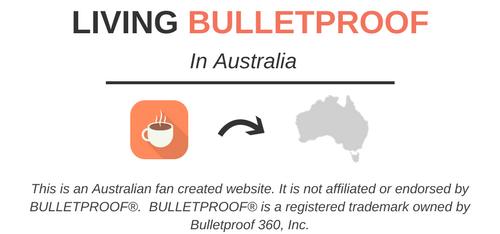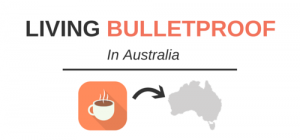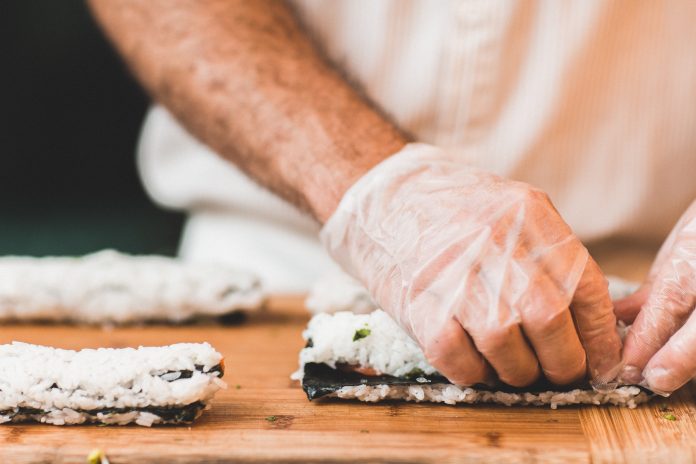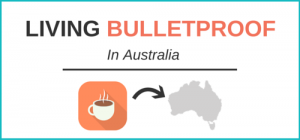How many carbohydrates should I eat with the Bulletproof Diet?
Eating a Bulletproof diet is definitely a lower carb diet compared to the Standard Australian Diet, which comes with the appropriate acronym SAD, but it does not have to be a low carb diet.
Carbohydrates have been given a bad rap over the past few years, especially with the popularity of ketogenic diets and the great results that a lower carbohydrate diet can give you if weight loss is your number one goal.
I like the ketogenic diet, and I will often encourage clients to give it a try to optimise body composition and their ability to burn fats for energy. People often (but not always) feel great eating a ketogenic diet but that does not mean that you should always eat a ketogenic diet, this is going to vary from person to person depending on your health goals.
A Main Principle of the Bulletproof Diet
One of the main focuses of the Bulletproof diet is not to be counting macronutrient ratio’s, but focusing on eating low inflammatory nutrient dense foods.
This does include eating plenty of good quality fats including avocado oil, coconut oil, macadamia oil, MCT oil and grass fed butter and ghee. This is one area that people eating the SAD diet could really benefit from. Fats are so important in the diet to optimise hormones, cellular health, energy, satiety, and nutrient absorption.
If worried, you may want to also research the effects of a high-fat diet and the risk of cardiovascular disease.
The Bulletproof diet is not a high protein diet. Once again protein needs are going to vary from person to person depending on your activity levels. I usually recommend one gram of protein per kilogram of bodyweight for the average person–with this amount increasing for athletes, especially if muscle growth is a goal. The Bulletproof diet also recommends a low protein diet of only 15-25 grams of protein 1-2 days a week. A lot of people miss this part but it’s beneficial for cellular repair and reducing inflammation.
Eating plenty of vegetables is also high on the priorities of the Bulletproof diet. While this includes a variety of green vegetables, it also includes starchy vegetables like pumpkin, carrot and sweet potato which are all in the “green” zone.
While many people don’t do well eating grains, especially gluten-containing grains like wheat, there are also many people that feel just fine after eating white rice. In fact, white rice is in the “recommended carbohydrates” on the Bulletproof diet, coming in just below the root vegetables on the healthy starches list.
Eliminating the “Kryptonite” Foods
Eating a nutrient dense quality food diet is the number one priority of the Bulletproof diet, and you cannot do that without eliminating the processed foods and drinks that contain the refined carbohydrates and industrial processed cooking oils.
When you first start eating a Bulletproof or Paleo style diet, it is a good idea to eliminate all of the potential “suspect” foods like dairy, grains, nuts, nightshade vegetables and refined sugars to fast track your way to good health.
Not everyone reacts to these foods though, so once you have gone through a period of eliminating them it is a good idea to introduce them one by one and assess how you feel. If they make you feel less than optimal then you either need to avoid this food, or just have it as an occasional food.
Counting Carbohydrates
I have just explained why you do not need to count calories or carbohydrates while doing the Bulletproof diet. If done properly you will intuitively eat the right amount. But some people need to track specific numbers. If you aren’t getting the expected results then counting macronutrient ratios can help you to see if you’re on the right track.
Ketogenic Diet
A ketogenic diet is a low carb, moderate protein and high-fat diet. When first starting out on a ketogenic diet, your carbohydrate levels need to be below 50 grams a day (for most people) and if you are overweight or insulin resistant then this amount may need to be below 30 grams a day.
To ensure that you are eating a nutrient dense diet, you still need to eat a variety of green vegetables. You need to eat a lot of leafy greens to make up 50 grams a day. This is a better option than eating no vegetables except for having a cup of sweet potato a day to get some carbs.
A ketogenic diet is a good short term option to test for 1-4 months to optimise your metabolism to burn fat, reduce insulin resistance and improve energy levels. After this time a cyclical ketogenic diet maybe a better option, this is where one day a week you increase your carbohydrate intake to 150-300 grams of carbohydrates a day. A good day to do this is when you are eating your low protein day.
A Low Carb Diet
A low carb diet is usually between 50-100 grams of carbohydrates a day. This is also a great range for weight loss and is much easier to achieve than a ketogenic diet as it gives you a wider variety of foods to eat.
This range of carbohydrates is better suited to women who are trying to lose weight. I find that more women experience hormonal problems when following a ketogenic diet compared to men.
A low carb diet is not well suited to people experiencing hormonal issues like low thyroid or adrenal dysfunction. I recommend you test your hormones to find out what to do if you have adrenal issues.
A Moderate Carb Diet
This is the middle path that will suit most people, especially once you have reached your optimal body weight (or if you do a lot of high-intensity exercise). A moderate carbohydrate diet is in the 100-200 gram/day range.
It is impossible to eat this amount of carbohydrate without including starchy vegetables and some fruit in your diet, or topping up your carbohydrate needs with some white rice. The key is still to focus on nutrient density and variety, and not just eating all starchy carbohydrates purely to top up your carbohydrate levels.
Higher levels of carbohydrates may not be great for people experiencing digestion problems like bloating, gas and reflux, as it can be the fermentable carbohydrates that are contributing to an overgrowth of bacteria in the small intestine. The answer is not to just eat a low carb diet forever but to work out the cause of your digestion problems.
Summary
There is no one size fits all for most things, including how many carbohydrates you should eat.
The Inuit people thrive on a high-fat diet that includes only 3% of their diet being carbohydrates. On the flip side, the Kitavan people of the Pacific eat a diet consisting of 75-80% carbohydrates with low levels of fat.
The key takeaway is that although eating different levels of carbs, both the Inuit and Kitavan don’t eat processed foods, and their particular diet is well suited to their genetics. The optimal diet for you is going to vary depending on your genes, stress levels, sleep quality, exercise and body composition.
This is why the Bulletproof diet is called a “roadmap”, it is a guide for you to help work out your optimal health journey.
Michael Smith is a Naturopath and Functional Medicine Practitioner at Planet Naturopath. Specialising in hormonal disorders, adrenal, thyroid and digestive function, Michael works with clients from the chronically ill to athletes wanting to improve performance. Consultations are available via Skype or phone and the functional pathology testing is available throughout Australia.










